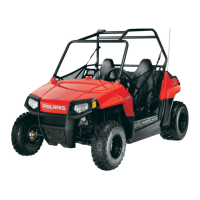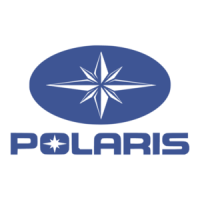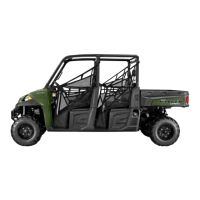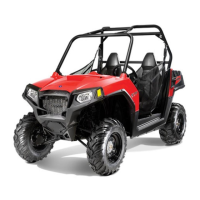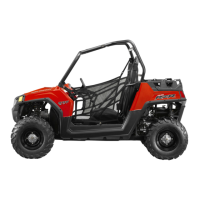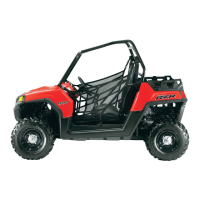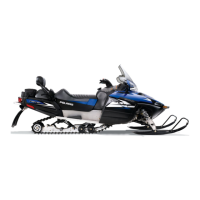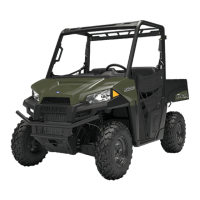2.34
MAINTENANCE
9924125 - 2013 RANGER RZR / RZR S / RZR 4 Service Manual
© Copyright 2012 Polaris Sales Inc.
Wheel Toe Alignment Inspection
1. Place machine on a smooth level surface and set
steering wheel in a straight ahead position. Secure
the steering wheel in this position.
2. Place a chalk mark on the center line of the front tires
ap
proximately 10” (25.4 cm) from the floor or as close
to the hub/axle center line as possible.
NOTE: It is important the height of both marks be
e
qually positioned to get an accurate measurement.
3. Measure the distance between the marks and record
the
measurement. Call this measurement “A”.
4. Rotate the tire
s 180 by moving the vehicle forward.
Position chalk marks facing rearward, even with the
hub/axle center line.
5. Again measure the distance between the marks and
re
cord. Call this measurement “B”. Subtract
measurement “B” from measurement “A”. The
difference between measurements “A” and “B” is the
vehicle toe alignment. The recommended vehicle toe
tolerance is 1/8” to 1/4” (.3 to .6 cm) toe out. This
means the measurement at the front of the tire (A) is
1/8” to 1/4” (.3 to .6 cm) wider than the measurement
at the rear (B).
Wheel Toe Adjustment
If toe alignment is incorrect, measure the distance
between vehicle center and each wheel. This will tell you
which tie rod needs adjusting.
NOTE: Be sure steering wheel is straight ahead
bef
ore determining which tie rod needs adjustment.
To adjust toe alignment:
• Hold tie rod end to keep it from rotating.
• Loosen jam nuts at both end of the tie rod.
• Shorten or lengthen the tie rod until alignment is as
re
quired to achieve the proper toe setting as
specified in “Wheel Toe Alignment”.
Wheel Toe-Out:
(A) - (B) = 1/8 to 1/4" (.3 to .6 cm)
During tie rod adjustment, it is very important that
the following precautions be taken when
tightening tie rod end jam nuts.
If the rod end is positioned incorrectly it will not
pivot, and may break.
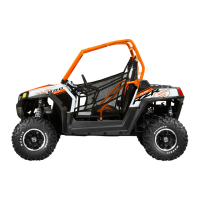
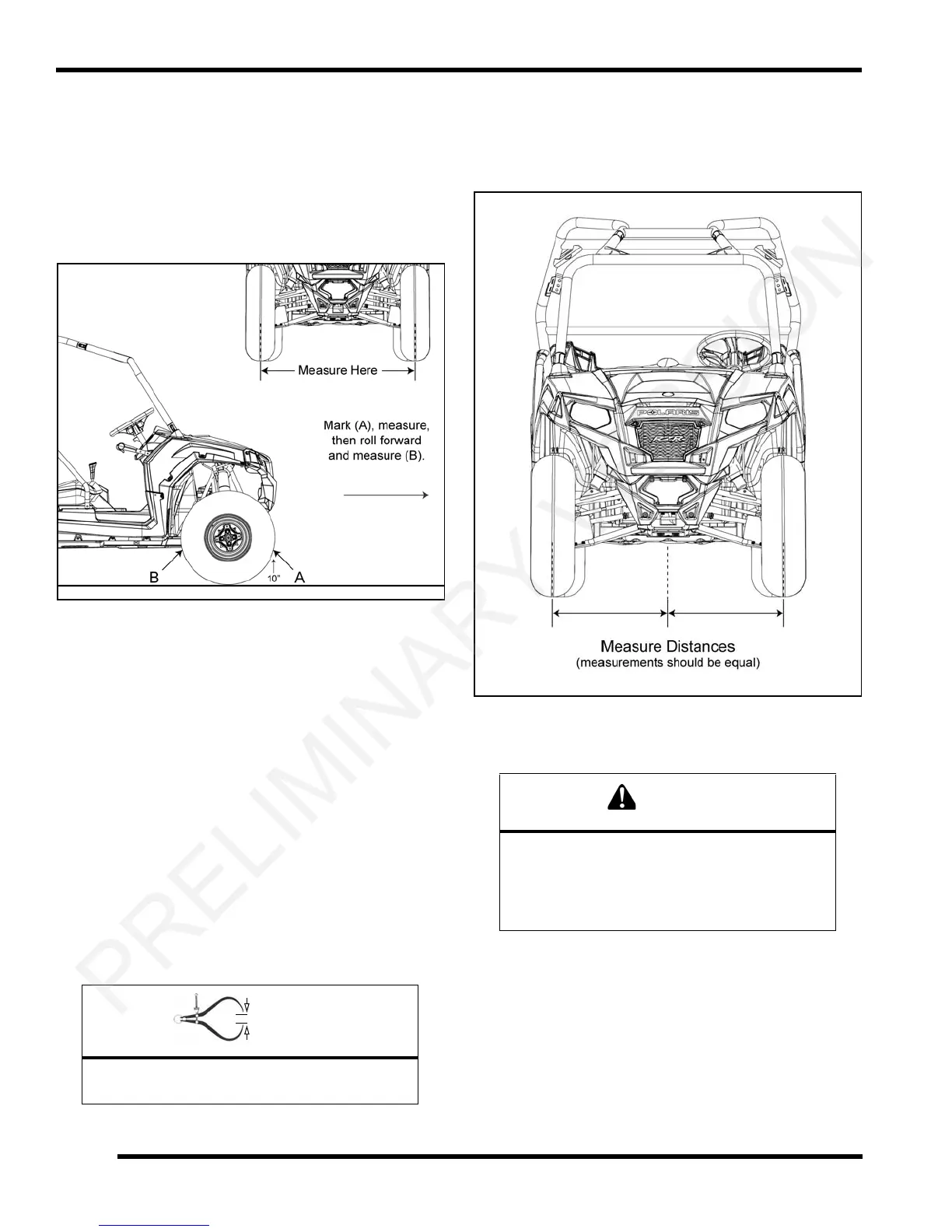